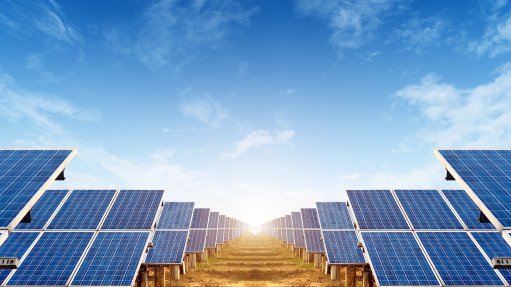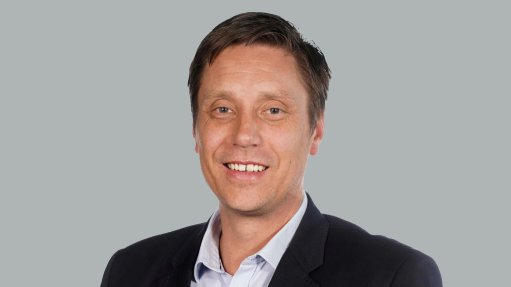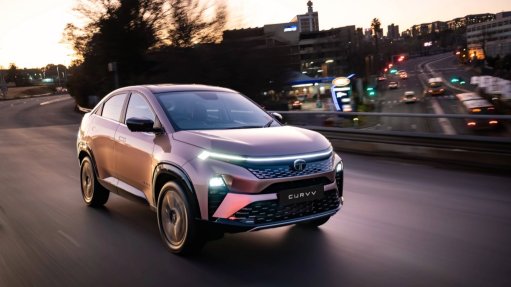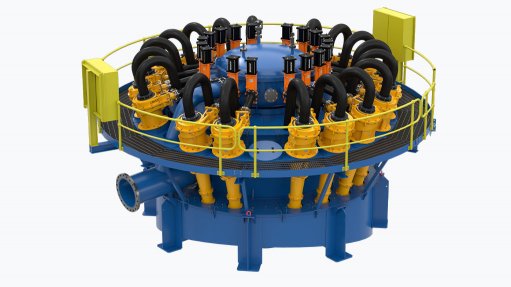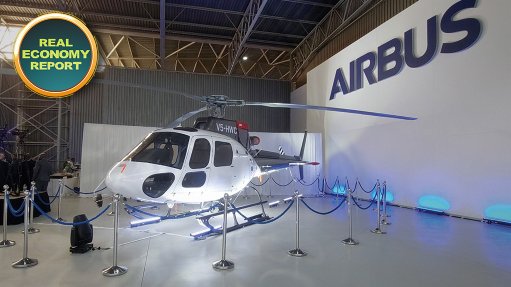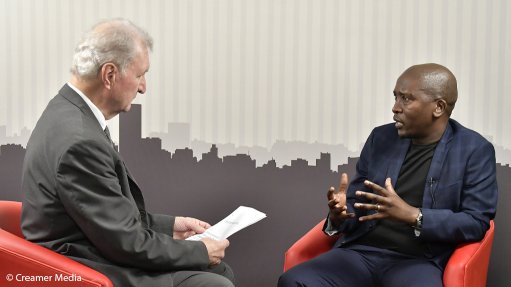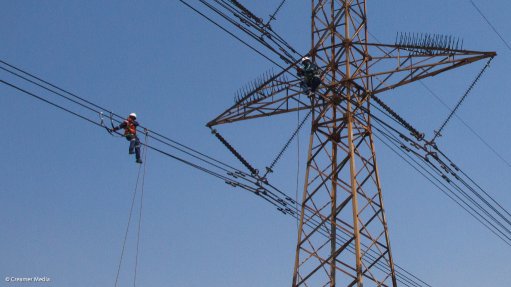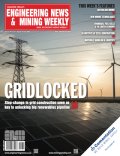Balancing the need for grid stability and meeting climate goals
This article has been supplied and will be available for a limited time only on this website.
By: IPP Mulilo’s Chief EPC Officer, Danie Möller
In the energy sector, progress is not linear. Infrastructure built decades ago, although innovative for its time, demands re-engineering in today’s more populated and environmentally conscious world.
Historically speaking, power infrastructure has always been about the needs of the people. Environmental concerns were few and far between, but now we have global climate goals that must be pursued. While these targets are welcomed, it can overlook the fact that our grid capacity must serve all South Africans – regardless of the urgent need for a sustainable energy reform. That’s why we have the Just Energy Transition (JET).
JET is a policy that helps us decarbonise our energy system in a way that also protects livelihoods, supports economic development, and ensures no one is left behind. It’s about balancing climate goals with social and energy realities on the ground.
To do this, our government recently introduced new regulations under the Climate Change Act, solidifying mandatory carbon budgets for major emitters and stricter 2031–2035 Nationally Determined Contribution (NDC) targets, raising the stakes for a transition that balances technology, grid stability, and compliance.
Hopefully, with this in place, we can build a cleaner system while keeping the grid stable and the lights on. Very doable with the right technology stack.
No single technology can do it all
Even the cleanest, most promising solution doesn’t operate in a vacuum. Renewables are a good example. However, renewables are variable by nature. We can’t rely on them alone to power an entire economy – not yet anyway.
That’s where technologies like battery energy storage systems (BESS) have a significant opportunity. BESS gives us the ability to smooth out short-term fluctuations, stabilise voltages, and make renewables more dispatchable. We’re now starting to see battery systems support the grid by providing immediate reserve capacity. The next step for BESS is to begin offering grid-forming functions, which traditionally, only fossil-based rotating power plants were able to provide.
Grid forming technology differs from grid following as it actively stabilises the network by injecting synthetic inertia, which replicates the rotating mass of traditional thermal generators, helping to smooth out unusual electrical swings following network faults. Grid-forming’s functions can even help restore an entire grid following a system-wide collapse. This is in stark contrast to more traditional grid-following technology in current wind and solar plants, which simply disconnect and isolate themselves following a network event. This further destabilises the network and limits the number of plants that can be connected to the grid safely.
We also need transition fuels. South Africa’s strategic location along shipping routes and its rich platinum group metal reserves make a green hydrogen economy highly promising. The technology is still complex and in the early stages of commercialisation.
Natural gas may not be the end goal, but right now, it could play a critical transition role in keeping the system flexible and responsive by replacing costly diesel in open-cycle gas turbine peaking plants. In time, we may see hydrogen step into that space and South Africa playing a leading role, but it’s still early days.
Of course, nuclear and hydropower are also playing their part, but I’ve always believed in building systems with redundancy. When one part is under strain, another can provide cover. But there is one fundamental problem…
You can’t deliver clean energy on a weak grid
The current grid wasn’t designed for the flow of energy we’re seeing today. While the private sector can move quickly, many projects are stalled due to insufficient grid capacity.
We have dozens of fully permitted projects in the Northern Cape which have some of the highest yields globally. As such, these offer the cheapest energy available, however, these are all currently on hold due to a lack of grid capacity. It’s not just the Northern or Western Cape anymore. Other provinces are also affected with several projects across bid windows still in limbo due to grid constraints.
Our government has publicly acknowledged the issue with more than a few positive strides towards a solution being made. However, fixing this requires more than piecemeal upgrades leveraged off individual IPP projects. It requires rethinking how we plan and prioritise transmission at a national level.
The private sector is doing some heavy lifting
Much of the current momentum comes from the private sector. IPPs like Mulilo are building new transmission substations, and mining companies are investing in renewables to meet net-zero targets. Rooftop solar from households is already shaving gigawatts off daytime demand, though this momentum has slowed as load-shedding pressures ease. With the right feed-in frameworks, residential generation could become a major balancing tool in the years ahead.
Government is stepping up too, having established the NTSCA, and progressed Section 34 determinations for over 1,164 km of new 400 kV transmission lines across the Northern Cape, North West, and Gauteng. Initiatives like the Integrated Transmission Planning programme, the finalised renewable energy masterplan (SAREM), World Bank funding efforts, and a National Treasury credit guarantee vehicle are unlocking private investment and strengthening the grid.
Getting these projects up and running remains a challenge, and bureaucracy can frustrate progress. Yet both public and private sectors are showing resilience, driven by people committed to being part of the solution.
We can’t forget the people in this transition
At Mulilo, we’ve worked on numerous projects near old coal communities. We’ve spoken to people who’ve built their lives around those industries and jobs. So, I don’t take it lightly when we talk about phasing out fossil fuels. It’s more than an engineering decision; it’s a human one. That’s why I believe in JET. Not just in theory, but in practice. If we don’t bring people along with us, we will fail no matter how clean our megawatts are. Retraining, community investment, and inclusive procurement – these can’t be nice-to-have side projects. They’re central to the success of South Africa’s energy transition.
Lighting up the future - where to from here?
It’s not hard to see we still have a long way to go with many hurdles in front of us (seen and unseen). But that’s okay. While the climate goalposts may move, progress can always be made – if we pull together. I’ve seen firsthand what can happen when projects get the green light, partners pull together, and government helps to open the right doors. I believe we can build an energy system that is clean, stable, and for the benefit of all South Africans. It won’t happen overnight. However, with the right investment, a shared commitment, and a lot of grit, it will happen.
Comments
Announcements
What's On
Subscribe to improve your user experience...
Option 1 (equivalent of R125 a month):
Receive a weekly copy of Creamer Media's Engineering News & Mining Weekly magazine
(print copy for those in South Africa and e-magazine for those outside of South Africa)
Receive daily email newsletters
Access to full search results
Access archive of magazine back copies
Access to Projects in Progress
Access to ONE Research Report of your choice in PDF format
Option 2 (equivalent of R375 a month):
All benefits from Option 1
PLUS
Access to Creamer Media's Research Channel Africa for ALL Research Reports, in PDF format, on various industrial and mining sectors
including Electricity; Water; Energy Transition; Hydrogen; Roads, Rail and Ports; Coal; Gold; Platinum; Battery Metals; etc.
Already a subscriber?
Forgotten your password?
Receive weekly copy of Creamer Media's Engineering News & Mining Weekly magazine (print copy for those in South Africa and e-magazine for those outside of South Africa)
➕
Recieve daily email newsletters
➕
Access to full search results
➕
Access archive of magazine back copies
➕
Access to Projects in Progress
➕
Access to ONE Research Report of your choice in PDF format
RESEARCH CHANNEL AFRICA
R4500 (equivalent of R375 a month)
SUBSCRIBEAll benefits from Option 1
➕
Access to Creamer Media's Research Channel Africa for ALL Research Reports on various industrial and mining sectors, in PDF format, including on:
Electricity
➕
Water
➕
Energy Transition
➕
Hydrogen
➕
Roads, Rail and Ports
➕
Coal
➕
Gold
➕
Platinum
➕
Battery Metals
➕
etc.
Receive all benefits from Option 1 or Option 2 delivered to numerous people at your company
➕
Multiple User names and Passwords for simultaneous log-ins
➕
Intranet integration access to all in your organisation






